Inside\Within is a constantly updating web archive devoted to physically exploring the creative spaces of Chicago's emerging and established artists.
Support for this project was provided by The Propeller Fund, a joint administrated grant from Threewalls and Gallery 400 at The University of Illinois at Chicago.

Search using the field below:
Or display posts from these tags:
3D printing 3D scanning 65 Grand 7/3 Split 8550 Ohio 96 ACRES A+D Gallery ACRE animation Art Institute of Chicago Arts Incubator Arts of Life audio blogging Brain Frame CAKE Carrie Secrist Gallery casting ceramics Chicago Artist Writers Chicago Artists Coalition Chicago Cultural Center Cleve Carney Art Gallery Clutch Gallery Cobalt Studio Coco River Fudge Street collage collection Columbia College Chicago Comfort Station comics conceptual art Contemporary Art Daily Corbett vs. Dempsey Creative Capital DCASE DePaul University design Devening Projects digital art Dock 6 Document drawing Duke University dye Elmhurst Art Museum EXPO Chicago Faber&Faber fashion fiber Field Museum film found objects GIF Graham Foundation graphic design Harold Washington College Hatch Hyde Park Art Center illustration Image File Press Imagists Important Projects ink installation International Museum of Surgical Science Iran Jane-Addams Hull House Museum jewelry Joan Flasch Artist's Book Collection Johalla Projects Julius Caesar Kavi Gupta Links Hall Lloyd Dobler LVL3 Mana Contemporary metalwork Millennium Park Minneapolis College of Art and Design Monique Meloche Museum of Contemporary Art Chicago (MCA) Museum of Contemporary Art Detroit (MOCAD) Museum of Contemporary Photography (MoCP) National Museum of Mexican Art (NMMA) National Resources Defense Council New Capital Northeastern Illinois University Northwestern University Ox-Bow painting paper mache Peanut Gallery peformance Peregrine Program performance photography PLHK poetry portraiture printmaking public art Public Collectors publications Renaissance Society risograph rituals Roman Susan Roots&Culture SAIC screen printing sculpture Sector 2337 Shane Campbell Silver Galleon Press Skowhegan Slow Smart Museum Soberscove Press social practice South of the Tracks Storefront SUB-MISSION Tan n' Loose Temporary Services Terrain Terrain Biennial text-based textile textiles The Banff Centre The Bindery Projects The Cultural Center The Franklin The Hills The Luminary The Packing Plant The Poetry Foundation The Poor Farm The School of the Art Institute of Chicago (SAIC) Threewalls Tracers Trinity College Trubble Club University of Chicago University of Illinois at Chicago (UIC) University of South Florida at Tampa Valerie Carberry Vermont Studio Center video weaving Western Exhibitions wood carving woodwork Yellow Book Yollocalli Arts Reach zinesInside\Within is produced in Chicago, IL.
Get in touch:
contactinsidewithin@gmail.com
Besty Odom's Feminization of the Hide
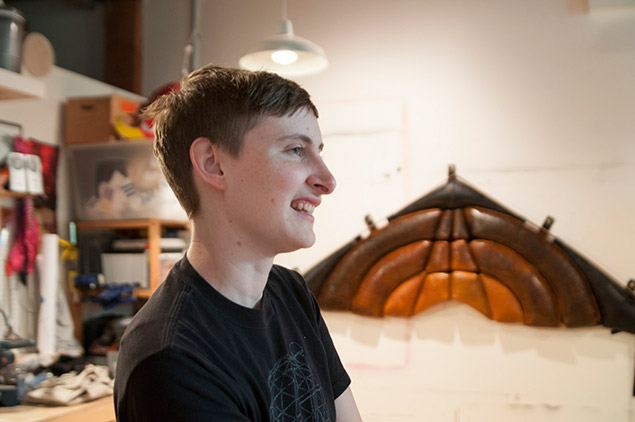
Betsy’s studio is located in Andersonville, a space filled with materials from giant chunks of cork to freshly sewn leather. Betsy’s practice spins masculine materials into feminized works, decorating hides with floral patterns and placing the practice of sport into objects that seduce the viewer into the desire to touch, hold, and feel.
I\W: How does queer culture influence your work and inform your sculptures?
BO: There is this term ‘queering’ that is a little bit weird to me. It’s like you have a magic wand and you can tap it on things and queer them. It is sort of a provocative way to take your identity and turn it into a verb. I don’t know if I am fully enacting some level of queerness. Maybe I am in terms of craft—I feel like I am definitely interested in the way that gender plays into craft or making things. I guess it depends on your lens, but in that queer lens the kind of very typical butch things are what I try to do in my studio. Without that lens there I still think there is something important about a woman trying to master, or at the very least take pride, in her craft.
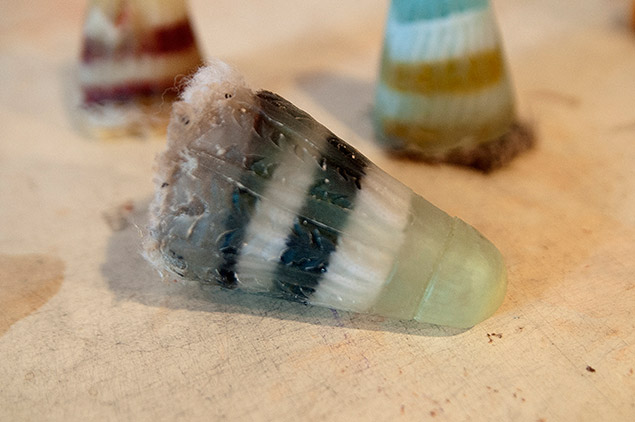
Are your sculptures more idealistic objects, or are do they point to a humorous and imagined reality?
I go back and forth with that. I really like making funny things—things that are so instantly juvenile that they can be disarming. Things like the shuttlecocks. I like playing with sport, and with gender played out in sport, and then turning that back into something that is sexual or erotic, and at the same time very desirable. You want to touch objects or pick them up with your hands and I think it’s really nice when they have a certain amount of self-awareness to them. I am much more interested in trying to be earnest with craft. The stuff I am working on now involves reconciling the early feminist art aesthetic. There are so many things there in terms of the essential core images that are still a little itchy. I am trying to use craft in a sincere way to deconstruct what it is about feminism that makes people uncomfortable.
Craft seems to have a feminine connotation to it, how does that disassociation with your more masculine procedures and materials play into your practice?
I try not to be very polar about it. I try to unpack what those differences are, and a lot of times those things have to do with muscle. The act of making is very physical, sweaty, and dirty. I can’t pick up some of my objects by myself at this point, so I think the ambition or accomplishment of that more masculine craft is a lot about proving a machismo in a way. Leather is really weird like that. Saddlemakers would shape and tool everything, and then their wives would stitch it all together. Leather is a very weird and gendered material. It is used for so many different things, so we have many associations with it, but they all contradict each other. Leather is super masculine and gruff, but also super sensual. Then there is this bigger issue that it is skin, and we use it to relate to our own. We protect ourselves with it, and we also reveal ourselves with it.
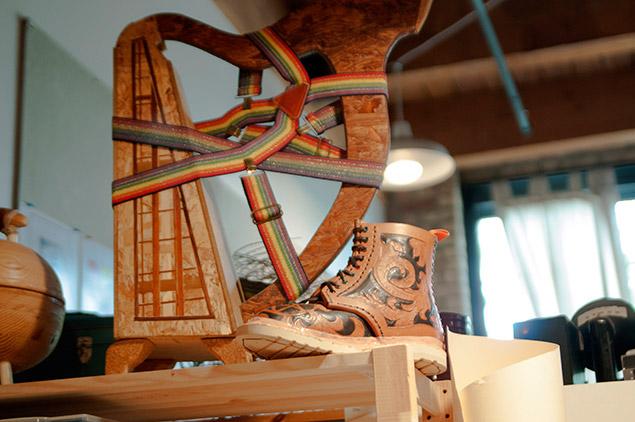
What does the process of tooling entail?
Tooling is the act of owning the skin, but you don’t necessarily need to do it. The tooling process uses raw leather and a special chisel, hammer, and beveling tools to make patterns. The process of tooling feels very much like getting to put your hand in something organic and actually influence it. Inevitably when you do that it tends to be this very girly, floral, and filigreed pattern. There is a weird connection where conquering a material means feminizing the surface of it.
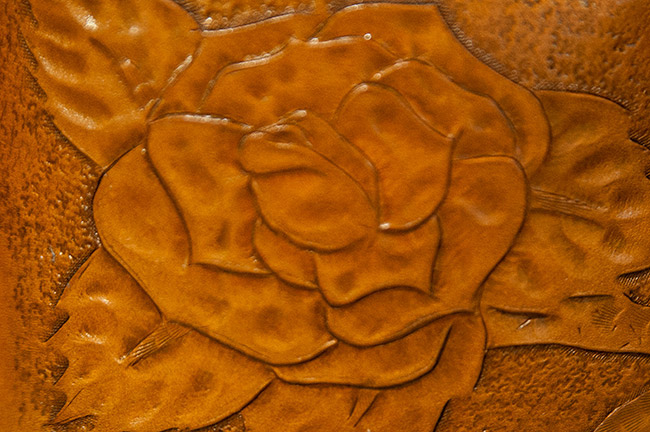
What is the latest way that you have incorporated leather into your practice?
I have been working on an object since last August and I will be working on it until at least this August. It has a certain kite-ness that is neither here nor there for me. It has wings and is a form that should fly, but instead it is a saggy, meaty wall piece. Kites have this back and forth between being gentle and naive, and also have the weight of flying a flag. What comes out is a very strange or alien object, but as you get into it, it is very familiar and feels like upholstery. I am trying to temper the butchness of working this big with a level of delicateness—it is beautiful, but it is not perfect.
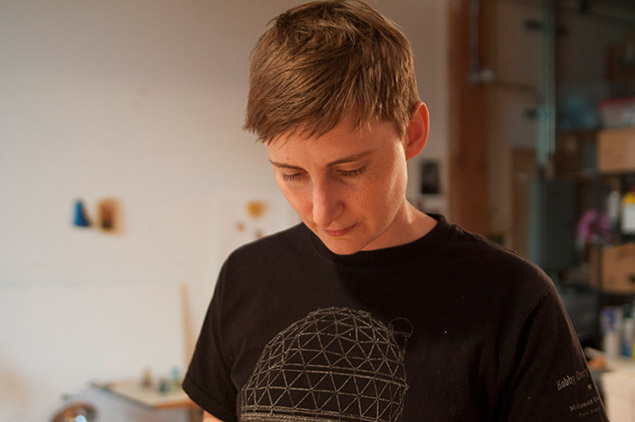
Where do you procure your leather?
There is a store in Elgin where I get half of a hide. That part is pretty cool. I know it makes vegetarians squeamish, but you can see the brands and where they poked the cow and stretched the hide. It is a very intense moment as a maker to unfurl this dead, living thing and craft out of it. There is touch of performativity in my process because the labor is so intense. Everything that is stitched together you have to punch a hole for, and there ends up being hundreds of holes. I have to plan out way ahead of time how to deal with each piece.
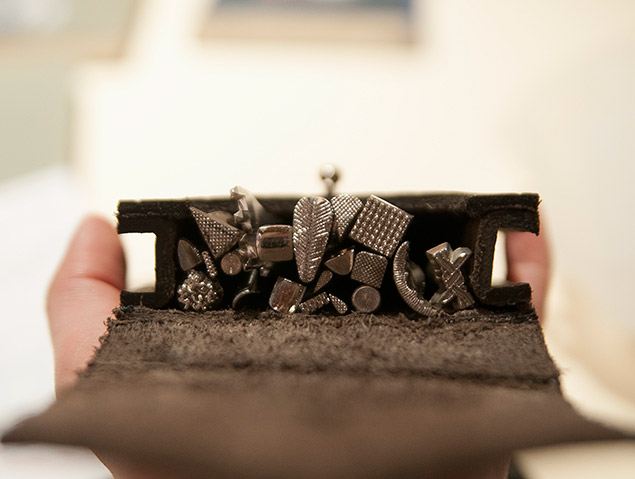
Have you had to protect your reasoning for working with leather?
When I went to grad school, you had to defend craft. You didn’t have to defend color or form, but if you chose to craft things, you had to really be able to justify it, which was an interesting challenge. I got interested in why it was so tricky. There is so much potential to just get sucked into it, be seduced by it. I try to craft as highly as I can without being over-decadent.
Do most of your objects have a place in your own personal history, or are more of them involved with fictitious stories?
When I was in school someone said, “You should make your art, and then your art will make you.” I feel like I am running a parallel in my work that emphasizes and plays up a lot of things, plays up the sportiness. Sport is a big subject where I am enacting this total fantasy about it. In life I definitely would love to go to the driving range, but I am no good at it. There is something about the idea of play that I enjoy.
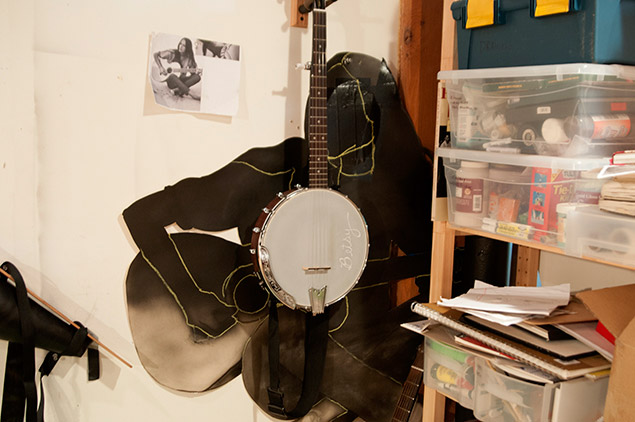
Can you explain the meaning behind your handkerchief project?
I had been trying to look really directly at queer and feminist signifiers linked to materials. Handkerchiefs is a play on the Hanky Code. There are so many things I love about the Hanky Code. It is this pretty mythologized practice where if you wear a certain color handkerchief in a certain pocket and you go into a gay bar, then it indicates that you like to get peed on, or to do it from the top, or you are into three ways, etc. There is this long code of different colored bandanas that have secret meaning. What I like is that it is a piece of fabric, it is literally material, but it means something huge as long as you are aware of it. I have been working on a variety of materials that I have sat down and carved in a reductive process to come to these various handkerchiefs. I was interested in creating my own code for the meaning for each. One material I have used is graphite. As soon as you get it at an industrial size it is just so concentrated that the potency of the material’s meaning becomes super concentrated as well. Graphite is such a surprising material because it feels like stone or it is inorganic, but it is literally just carbon. It absorbs light and it is heavy, but it is also brittle. It shape shifts a lot.
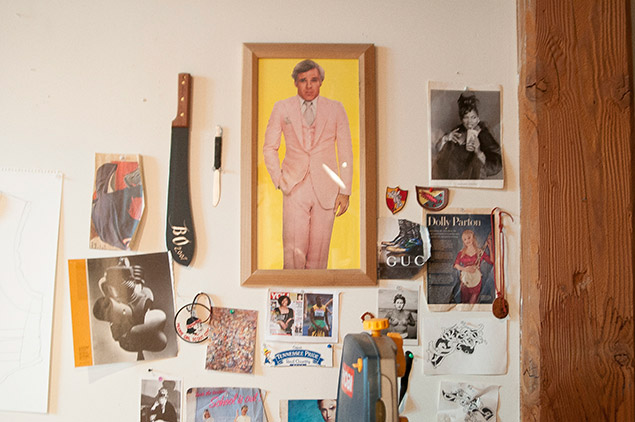
How else are you working with material?
I am conceiving a piece that will be impossible not to touch. I think all of my stuff is tactile and the material is inviting in a way. It is a part of the seduction, the “touch me.” I would never just want to put a sign up and say it is OK to touch. I am hoping I can manipulate scale, location to your own body, material, and light to make it clear that you have to touch it. I don’t know what it will end up being, but I am fascinated with the Honda CB motorcycle. It is a weirdly gendered motorcycle. It is too underpowered to be this really masculine bike, but it is too big and angular to be positioned as a lady’s. It is built for the androgynous. The shape of its gas tank and the shape of its chair would really lend itself to these tactile materials for the desire of touch.


